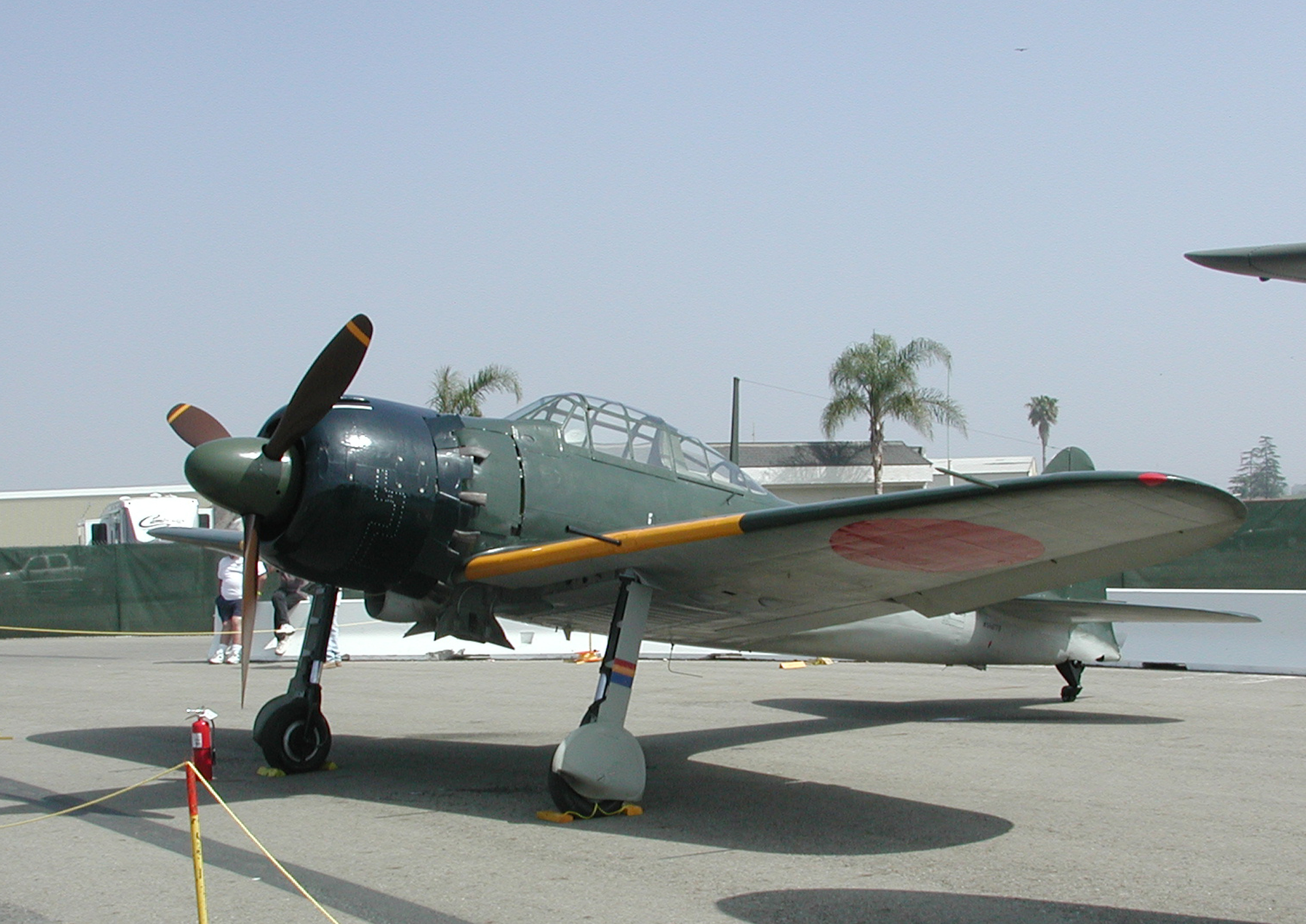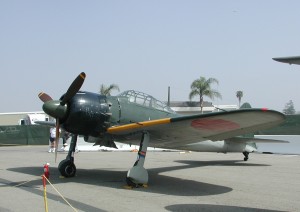By Larry W. Bledsoe
On Saturday, Dec. 2, 2006, at The Air Museum Planes of Fame on Chino Airport (CNO), in Chino, Calif., Santa Ana winds were blowing dust and debris across the airfield. It wasn’t a day to be flying, even though the skies were blue, and visibility was unlimited once you got above the dirt-filled air. It was a day pilots would work on their planes or clean hangars, rather than fight the treacherous gusting crosswinds on landing, especially in taildraggers. It certainly wasn’t a good day for the museum to risk damaging its one-of-a-kind Japanese Zero fighter.
But, it was time for the museum’s monthly event, and a crowd was gathered to hear the speakers and watch this unique aircraft fly. Mark Foster, the museum general manager, opened the session, and then called on Frank Mormillo to moderate the program.
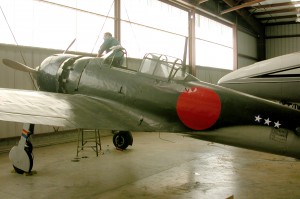
Zero no. 61-120 was a Mitsubishi design, produced under Nakajima license, and was the 2,357th aircraft of its type to come off the Nakajima production line.
The original invited guest, a Japanese Zero pilot, passed away only weeks before the show. In his place, Kevin Eldrige, one of the museum’s pilots, talked about his experiences flying this particular A6M5.
Ed Maloney, founder of Planes of Fame, told about finding the plane in a Los Angeles junkyard in 1950. He then stored it in his backyard until he opened the museum on Jan. 12, 1957, in Claremont, Calif.
What makes this plane so unique? When the Marines invaded Saipan in June 1944, they captured 12 intact, late-model Japanese Zero fighters. These planes were put aboard the escort carrier USS Copahee (CVE-12) and ferried back to NAS North Island in San Diego. Four of the planes were returned to flying condition; the Navy kept two and two were sent to the Army Air Force at Wright Field, Ohio, for evaluation.
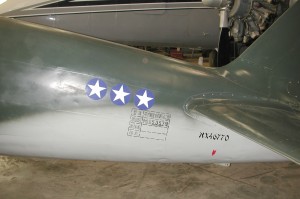
This Zero carries the same color scheme as it did when flying in WWII, right down to the precise shade of green camouflage paint, which varied in tone from factory to factory in Japan.
The Navy’s planes were ferried to NAS Patuxent River, Md., for pilot evaluation. According to Mormillo, one of those pilots listed in the logbook was Charles Lindbergh. When the plane was returned to NAS North Island, other Navy and Marine Corps combat veterans test flew the plane, including Marion Carl, noted USMC ace. After the war, the plane was declared surplus.
One of the two planes sent to the Army Air Force may still exist. According to the Smithsonian National Air and Space Museum, the A6M5 displayed there probably came from that batch of aircraft ferried back from Saipan, but it’s not in flying condition, like the Zero at the Chino museum.
The Planes of Fame’s A6M5 Zero, no. 61-120, is the world’s only fully authentic flyable example of the Japanese Zero. Restored to flyable condition in June 1978, this fighter is still powered by its original Nakajima Sakae 31 engine, a 14-cylinder radial that produces 1,200 hp. Except for armament and a few minor equipment changes, it’s essentially the same as it was when the Imperial Japanese Navy operated it during the war. The plane is painted in the markings of the 261st Japanese Naval Air Corps. It even carries the same color scheme and markings that it bore in combat, right down to the precise shade of green camouflage paint, which varied in tone from factory to factory in Japan.

Fighter Rebuilders is restoring an A6M3 at the Planes of Fame. The plane is one of three wrecked Zeros that were originally rebuilt in Russia.
The 261st JNAC was more commonly known as the Tiger Corps. It was activated on June 1, 1943, and was soon assigned to the newly organized 1st Air Fleet. Under the command of Lt. Cdr. Takatora Ueda, the Tiger Corps moved to the Marianas in early1944 and was assigned to defend the Tinian, Rota, Palau and Saipan islands, where this Zero was captured in 1944.
This isn’t the only Zero at the Planes of Fame. According to Mormillo, three crashed Zeros were recovered and sent to Russia for complete rebuilding. The Russians used American Pratt & Whitney R-1830 engines instead of the original Japanese engines. An owner of one of those planes later brought it to Fighter Rebuilders, at Chino Airport, where they discovered that the plane needed to be reskinned as part of the restoration process. This plane is now on its second rebuild at the museum.
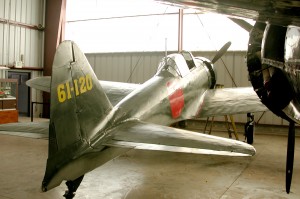
This A6M5 is painted in the markings of the 261st Japanese Naval Air Corps, which it bore in combat.
Were dedicated warbird enthusiasts who attended the event disappointed that the museum’s Zero didn’t fly because of the winds? Maybe, but the rare warbird was rolled out of the hangar, and the engine was started up, anyway. True warbird enthusiasts, with fine-tuned ears, know that different World War II aircraft have unique sounds. To hear the world’s only working Nakajima Sakae 31 engine actually running was a unique experience in itself.
Monthly events include seminars and, weather permitting and whenever possible, flight demonstrations by appropriate aircraft. Seminars start at about 10 a.m. and last until about 2 p.m. They occur on the first Saturday of every month. Flight demonstrations are a part of each museum event at around 12 p.m. Drawings are conducted for member-supported flights in some of the Planes of Fame warbirds, whenever the situation permits.
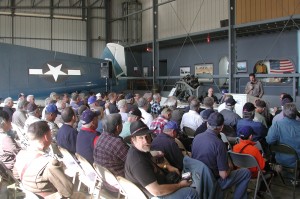
The Planes of Fame hosts a special event the first Saturday of each month. Mark Foster, the museum’s general manager, opened the December event, which featured the Japanese Zero.
The monthly Saturday events also feature seminars involving participants who will relate their personal experiences with the subjects of those seminars. Any individuals with experiences that might relate to the subjects of those seminars are invited to contact The Air Museum.
For more information, visit [http://www.planesoffame.org].











